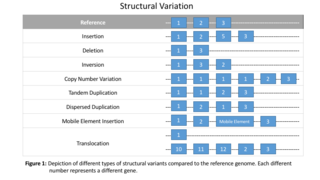
Ōtaki is a town located in Chiba Prefecture, Japan. The town is known for its association with Edo period general Honda Tadakatsu, and its prominent castle. As of December 2015, the town had an estimated population of 9,676, and a population density of 74.5 persons per km2. The total area the town is 129.87 square kilometres (50.14 sq mi), making it the largest of Chiba Prefecture's towns and villages.

The phosphatidylinositol-4,5-bisphosphate 3-kinase, catalytic subunit alpha, also called p110α protein, is a class I PI 3-kinase catalytic subunit. The human p110α protein is encoded by the PIK3CA gene.
Complement component 4 (C4), in humans, is a protein involved in the intricate complement system, originating from the human leukocyte antigen (HLA) system. It serves a number of critical functions in immunity, tolerance, and autoimmunity with the other numerous components. Furthermore, it is a crucial factor in connecting the recognition pathways of the overall system instigated by antibody-antigen (Ab-Ag) complexes to the other effector proteins of the innate immune response. For example, the severity of a dysfunctional complement system can lead to fatal diseases and infections. Complex variations of it can also lead to schizophrenia. Yet, the C4 protein derives from a simple two-locus allelic model, the C4A-C4B genes, that allows for an abundant variation in the levels of their respective proteins within a population. Originally defined in the context of the Chido/Rodgers blood group system, the C4A-C4B genetic model is under investigation for its possible role in schizophrenia risk and development.

Complement deficiency is an immunodeficiency of absent or suboptimal functioning of one of the complement system proteins. Because there are redundancies in the immune system, many complement disorders are never diagnosed, some studies estimated that less than 10% are identified. Hypocomplementemia may be used more generally to refer to decreased complement levels while secondary complement disorder means decreased complement levels that are not directly due to a genetic cause but secondary to another medical condition.
Single cell sequencing examines the sequence information from individual cells with optimized next generation sequencing (NGS) technologies, providing a higher resolution of cellular differences and a better understanding of the function of an individual cell in the context of its microenvironment. Sequencing the DNA of individual cells can give information about mutations carried by small populations of cells, for example in cancer, while sequencing the RNAs expressed by individual cells can give insight into the existence and behavior of different cell types, for example in development.
Replication timing quantitative trait loci are genetic variations that lead to a differential use of replication origins, exhibiting allele-specific effects on replication timing. Originally, 16 rtQTL were found in an analysis of human genomes.
Fibro-Adipose Vascular Anomaly distinct congenital disorder characterized by muscular fibrofatty changes, dilated veins (phlebectasia) causing pain and contracture.
Beth Stevens is an associate professor in the Department of Neurology at Harvard Medical School and the F. M. Kirby Neurobiology Center at Boston Children’s Hospital. She has helped to identify the role of microglia and complement proteins in the "pruning" or removal of synaptic cells during brain development, and has also determined that the impaired or abnormal microglial function could be responsible for diseases like autism, schizophrenia, and Alzheimer's.
Nipponoolithus is an oogenus of fossil egg native to Japan. It is one of the smallest known dinosaur eggs, and was probably laid by some kind of non-avian maniraptor.

Structural variation in the human genome is operationally defined as genomic alterations, varying between individuals, that involve DNA segments larger than 1 kilo base (kb), and could be either microscopic or submicroscopic. This definition distinguishes them from smaller variants that are less than 1 kb in size such as short deletions, insertions, and single nucleotide variants.

Complex traits, also known as quantitative traits, are traits that do not behave according to simple Mendelian inheritance laws. More specifically, their inheritance cannot be explained by the genetic segregation of a single gene. Such traits show a continuous range of variation and are influenced by both environmental and genetic factors. Compared to strictly Mendelian traits, complex traits are far more common, and because they can be hugely polygenic, they are studied using statistical techniques such as QTL mapping rather than classical genetics methods. Examples of complex traits include height, circadian rhythms, enzyme kinetics, and many diseases including diabetes and Parkinson's disease. One major goal of genetic research today is to better understand the molecular mechanisms through which genetic variants act to influence complex traits.






